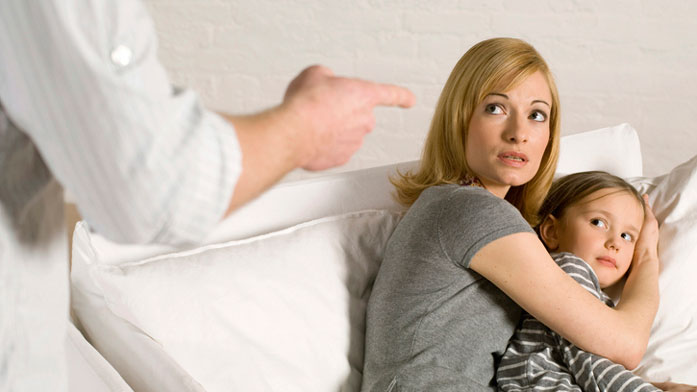Child Abuse

Help is Available
Local Resources:
Ventura County Crisis Team:
1-866-998-2243
(24 hours a day, 7 days a week)
Emergency: Call 911
Interface Children & Family Services
Call 1-800-636-6738
Services offered:
• Family Violence Response Team
• Safe Haven Emergency Shelter
• Safe Journey Transitional Shelter
• Women’s Support Group
2-1-1 Ventura County Information & Referral
Call 2-1-1
Project Connecting with my Peers:
Educating women about the early signs of depression
Oxnard: (805) 483-1166
Santa Paula / Fillmore:
(818) 427-5444
Clinicas del Camino Real
Oxnard, Santa Paula, Simi Valley, Thousand Oaks, Ventura
(805) 647-6353
The Coalition for Family Harmony
24-Hour Bilingual Hotline:
1-800-300-2181
Email: gethelp@thecoalition.org
National Resource:
The National Domestic Violence Hotline
Call 1-800-799-7233, 24 hours a day, 7 days a week
Anonymous & confidential
Child abuse comes in many forms and all are equally damaging to the physical and emotional health and development of a child. Abuse and mistreatment of children can range from neglect, such as not providing a safe and clean home, to verbal abuse like name-calling and putting down, to physical abuse like beating and biting, as well as more severe physical and emotional abuse in the form of sexual abuse. An important factor of child abuse is how the different forms of abuse are related - a child suffering from sexual abuse is also a neglected child, and a child subject to verbal abuse is usually also subject to physical abuse.
Abuse causes stress that can disrupt early brain development and can harm the development of the nervous and immune systems a well. As a result, children who are abused or neglected are at higher risk for health problems as adults. These problems include alcoholism, depression, drug abuse, eating disorders, obesity, high-risk sexual behaviors, smoking, suicide, and certain chronic diseases.
Quite often, abuse begins in a home where stress is high. Stressful factors can be drug and alcohol abuse, as well as excessive employment and financial stresses. These stresses may also exhibit themselves in other problems such as spousal abuse. Also, in neighborhoods and communities where violence is common, abuse can easily be overlooked.
To prevent child abuse, we have to be able to recognize some of the common behavior and physical symptoms exhibited by both a child of abuse and an abusive adult.
What is child abuse?
All children have the right to a safe and nurturing home, either with parents, or any other adult who is responsible for their care and upbringing. Children of all ages are subject to abuse and those under the age of 4, and especially small infants, are at greater risk of extreme injury and death as a result of abuse. Child abuse does not discriminate and occurs in all socioeconomic levels, racial, ethnic and cultural groups, at all levels of education and within all religions. According to a study by the Department of Health and Human Services, Administration on Children and Families, in 2008 alone 1,740 children died in the United States from abuse and neglect, and 772,000 children were found to be victims of abuse by child protective services. Many cases of child abuse go unreported.
SIGNS OF NEGLECT
Consider the possibility of neglect when the child:
- Is frequently absent from school
- Begs or steals food or money
- Lacks needed medical or dental care, immunizations, or glasses
- Is consistently dirty and has severe body odor
- Lacks sufficient clothing for the weather
- Abuses alcohol or other drugs
- States that there is no one at home to provide care
Consider the possibility of neglect when the parent or other adult caregiver:
- Appears to be indifferent to the child
- Seems apathetic or depressed
- Behaves irrationally or in a bizarre manner
- Is abusing alcohol or other drugs
SIGNS OF VERBAL ABUSE
Consider the possibility of verbal abuse when the child:
- Is being called names by a parent, acquaintance or friends
- Is subjected to critical, sarcastic, and mocking words or yelling, swearing and screaming
- Is being intimidated by threats
- Is constantly being blamed for the parents actions and behaviors
- Has their feelings dismissed
SIGNS OF EMOTIONAL ABUSE
Consider the possibility of emotional abuse when the child:
- Shows extremes in behavior, such as overly compliant or demanding behavior, extreme passivity, or aggression
- Is either inappropriately adult (parenting other children, for example) or inappropriately infantile (frequently rocking or head-banging, for example)
- Is delayed in physical or emotional development
- Has attempted suicide
- Reports a lack of attachment to the parent
Consider the possibility of emotional abuse when the parent or other adult caregiver:
- Constantly blames, belittles, or berates the child
- Is unconcerned about the child and refuses to consider offers of help for the child's problems
- Overtly rejects the child
SIGNS OF PHYSICAL ABUSE
Consider the possibility of physical abuse when the child:
- Has unexplained burns, bites, bruises, broken bones, or black eyes
- Has fading bruises or other marks noticeable after an absence from school
- Seems frightened of the parents and protests or cries when it is time to go home
- Shrinks at the approach of adults
- Reports injury by a parent or another adult caregiver
Consider the possibility of physical abuse when the parent or other adult caregiver:
- Offers conflicting, unconvincing, or no explanation for the child's injury
- Describes the child as "evil," or in some other very negative way
- Uses harsh physical discipline with the child
- Has a history of abuse as a child
- Has an explosive temper
